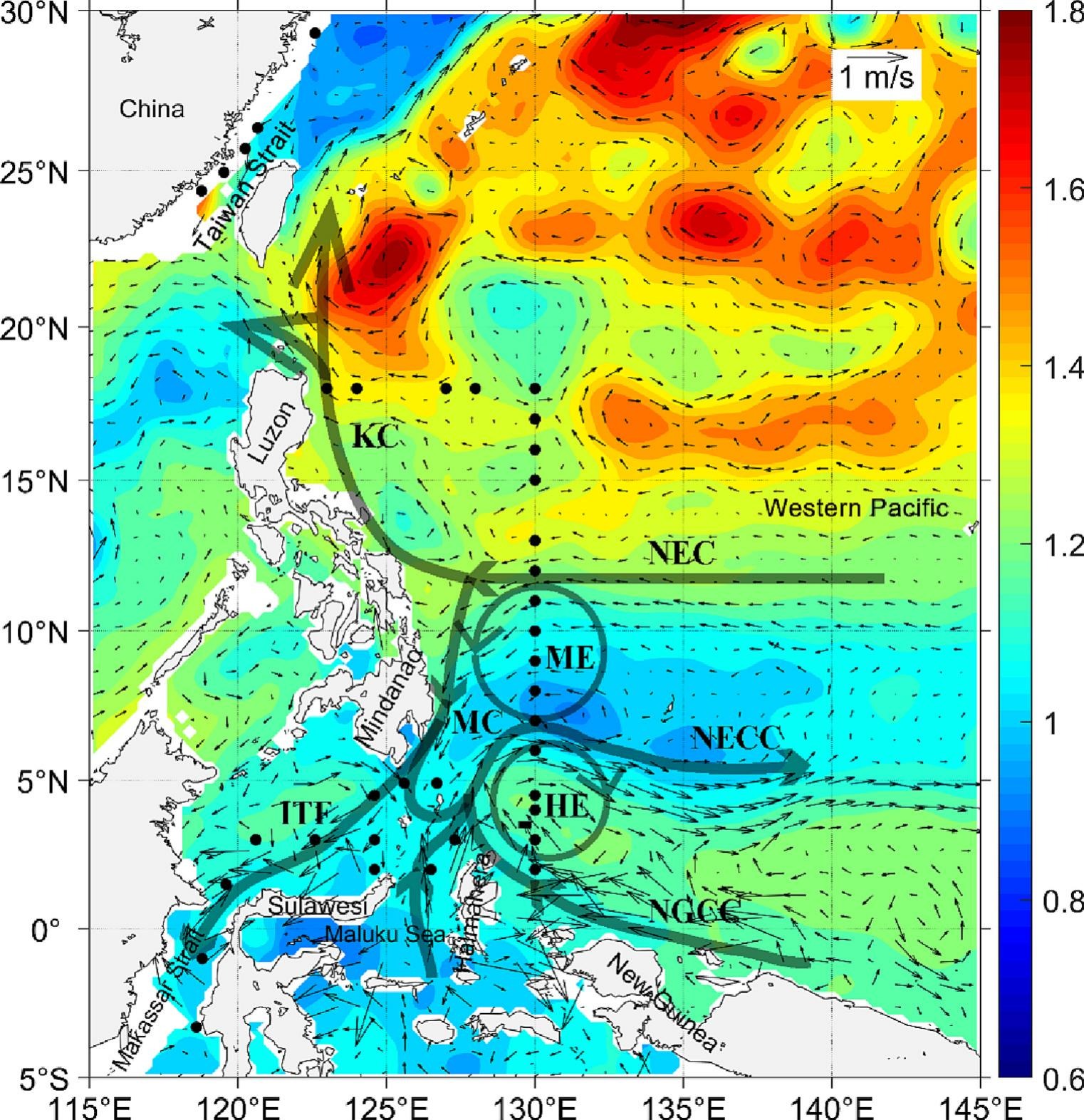Dongliang Yuan, Corry Corvianawatie, Muhammad Reza Cordova, Dewi Surinati, Yao Li, Zheng Wang, Xiang Li, Rui Li, Jing Wang, Lei He, Allen N. Yuan, Dirham Dirhamsyah, Zainal Arifin, Xiaoxia Sun, Atsuhiko Isobe
Published in Journal of Sea Research, August 2023
The abundance of microplastics fragments with sizes larger than 0.30–0.35 mm is measured during two research cruises in the tropical Northwestern Pacific Ocean and inside the Indonesian seas. The fragments are confirmed to be primarily nylon, polyester, and polyethylene etc. microplastics in the western Pacific by Fourier transform infrared spectroscopy (FT-IR), whereas dominated by polyethylene in the Indonesian seas based on Raman spectrum analyses. The abundance of the microplastics is found to be very low (<0.018 particles m−3) in the surface waters of the North Equatorial Current and the Kuroshio, suggesting no westward extension of the Great Pacific Garbage Belt and lack of microplastics accumulation due to mass convergence in the western boundary current. The abundances of the microplastics in the Makassar Strait of the Indonesian seas are found to be higher by an order of magnitude than those in the Northwestern Pacific, believed to be due to river run-offs carrying microplastics from nearby lands. The largest microplastics abundance is found in the northeastern Maluku Sea, where concurrent current measurements suggest a branch of the Indonesian Throughflow bringing accumulated microplastics from the eastern Indonesian seas into the convergent area of multiple strong currents. The study underlines the importance of ocean circulation in the microplastics distributions and transportation, and suggests the importance of high-resolution spatial mapping in the budget analysis of global microplastics distribution.

Fig. Mean absolute dynamic topography (shading, unit: m) and OSCAR surface geostrophic velocity (vector) during the 2017 western Pacific cruise from October 17th to November 12th. Black dots denote the microplastics trawling stations. The curved arrows stand for the North Equatorial Current (NEC), North Equatorial Countercurrent (NECC), Kuroshio (KC), New Guinea Coastal Current (NGCC), Mindanao Current (MC), and Indonesian Throughflow (ITF). Two mesoscale eddies the Mindanao Eddy (ME) and Halmahera Eddy (HE) are also drawn in the schematic current system.
Yuan, DL, C. Corvianawatie, M. Cordova, D. et al. 2023. Microplastics in the tropical Northwestern Pacific Ocean and the Indonesian seas, Journal of Sea Research, 194, https://doi.org/10.1016/j.seares.2023.102406